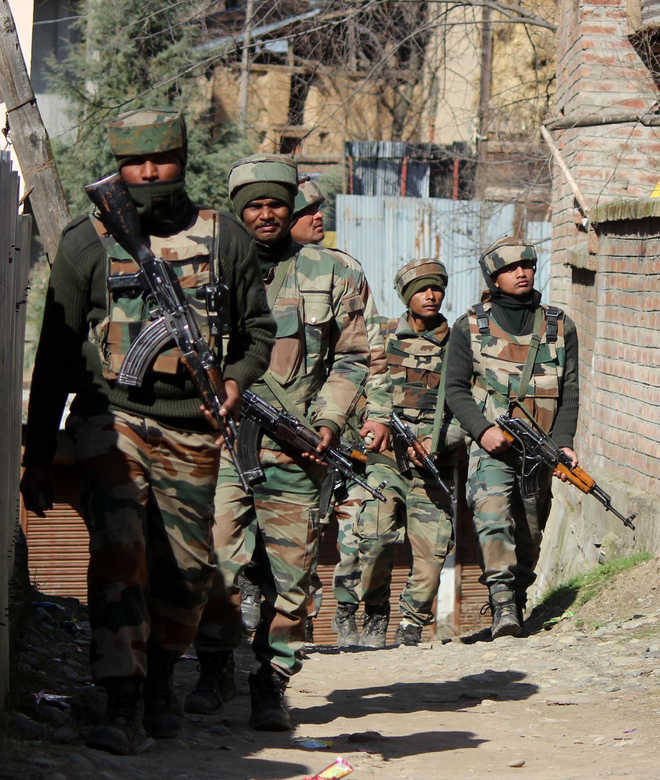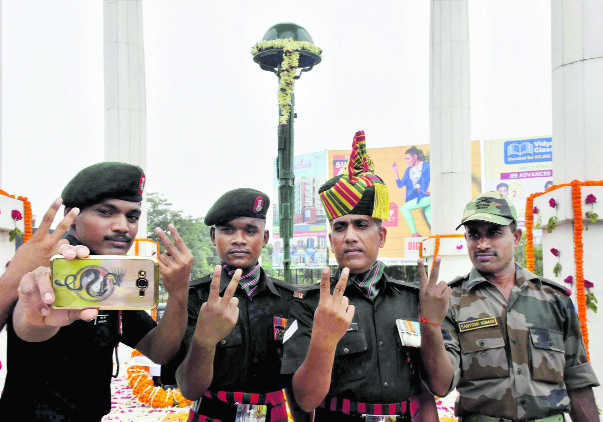
Supporters of Capt Amarinder Singh celebrating the Congress victory in Punjab Assembly elections at his residence in Patiala on Saturday. — Tribune photo: Rajesh Sachar
Tribune News Service
Chandigarh, March 11
The Congress on Saturday made a resounding comeback in Punjab after a gap of a decade, getting a clear majority in the 117-member Assembly with lead/win in 77 seats. AAP and the SAD-BJP combine were at 22 and 18, respectively.
| Leads/Wins | SAD+ | Congress | Aam Aadmi Party+ |
| 117 | 18 | 77 | 22 |
Click here for all candidates, winners and their votes in Punjab Assembly elections-2017
PUNJAB ROUNDUP: Amarinder wins Patiala, Badal Lambi, Sukhbir Jalalabad seats
With the ruling party facing a humiliating defeat, Chief Minister and Akali patriarch Parkash Singh Badal said he would be submitting his resignation to the Governor tomorrow.
Shiromani Akali Dal managed to win three seats and was ahead in 11 seats.Among key candidates, Congress party’s chief ministerial candidate Amarinder Singh won the Patiala seat with a huge margin of 52,407 votes as he defeated his nearest rival AAP candidate Balbir Singh.SAD candidate and former Army Chief J J Singh finished third by securing 11,677 votes.Chief Minister Badal won from his traditional Lambi seat defeating his nearest rival Congress candidate Captain Amarinder Singh by 22,770 votes.Badal, the SAD candidate, polled 66,375 votes while Singh secured 43,605 votes. The Chief Minister congratulated Congress president Amarinder Singh on his win and assured full support to him.”SAD will discuss the reasons for the defeat of the party in the assembly elections,” he said.A beaming Amarinder Singh thanked the people of the state for their overwhelming support. “People voted out Akalis, who destroyed Punjab and rejected the AAP, who came more like a summer storm,” Singh said.”Committed to good governance, tackling drug menace, besides health and education will be priority,” Singh said.In the 2012 assembly elections, the SAD had won 56 seats and its ally BJP 12 seats.Congress had won 46 and the remaining three seats had gone to Independents. — PTI





































































